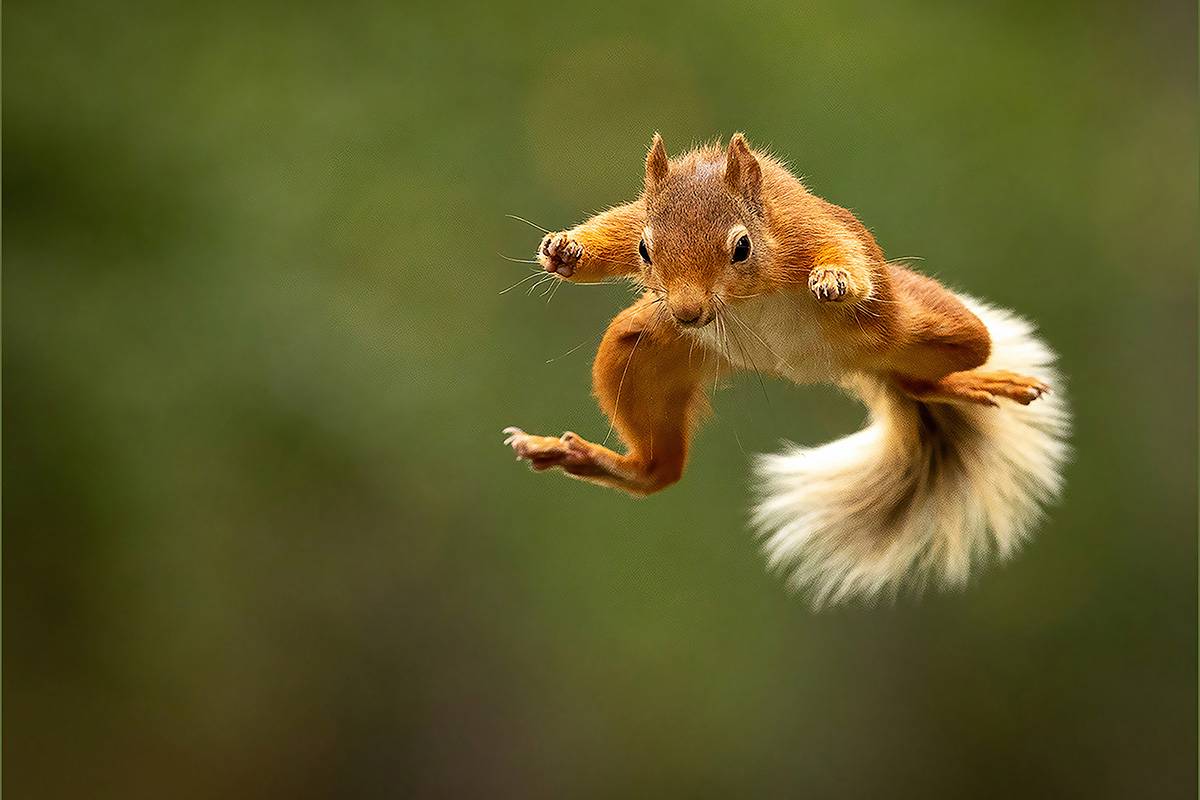Flying squirrels, despite their name, don't actually fly like birds. Instead, they glide gracefully through the air, making them some of the most intriguing creatures in the animal kingdom. These nocturnal mammals possess unique adaptations that enable them to navigate the skies with ease. Let's uncover five fascinating facts about flying squirrels.
1. Aerial Acrobats, Not Flyers
Flying squirrels are renowned for their ability to glide through the air, but they don't truly fly. They achieve their airborne feats using a patagium, a stretchy membrane of skin that runs from their wrists to their ankles. By spreading their limbs, they can control their direction and distance as they glide from tree to tree, often spanning impressive lengths of up to 150 feet.
2. Stealthy Nocturnal Navigators These remarkable rodents are primarily nocturnal, using the cover of darkness to forage for food without the threat of predators. Their large, well-adapted eyes allow them to see in low light conditions, while their keen sense of smell helps them locate food and avoid danger in the darkness.
3. Diverse Diet Flying squirrels have an omnivorous diet, which means they consume a wide range of foods. While they primarily feed on nuts, fruits, and seeds, they also include insects, bird eggs, and even small vertebrates in their diet. This adaptability allows them to thrive in various environments, from forests to suburban areas.
4. Social and Family-Oriented Unlike some solitary squirrel species, flying squirrels tend to be more social and can live in small colonies. They exhibit strong family bonds, often sharing nests with their kin. Mothers are especially devoted, caring for their young until they are old enough to venture out on their own. This social structure enhances their chances of survival, as they can share information about food sources and protect each other from predators.
5. Nature's Daredevils Flying squirrels' gliding abilities not only help them find food and evade predators but also serve as a way to escape danger. They can swiftly flee to treetops and glide away from predators or threats on the ground. While gliding, they can adjust their body posture to control their speed and direction, showcasing impressive aerial maneuvers that demonstrate their remarkable survival instincts.
In conclusion, flying squirrels might not be true flyers, but they are undoubtedly masters of the night skies. Their unique adaptations, social tendencies, and acrobatic gliding abilities make them captivating subjects of study. Whether they're soaring through the forest canopy or building strong family bonds, these creatures continue to enchant researchers and nature enthusiasts alike.


